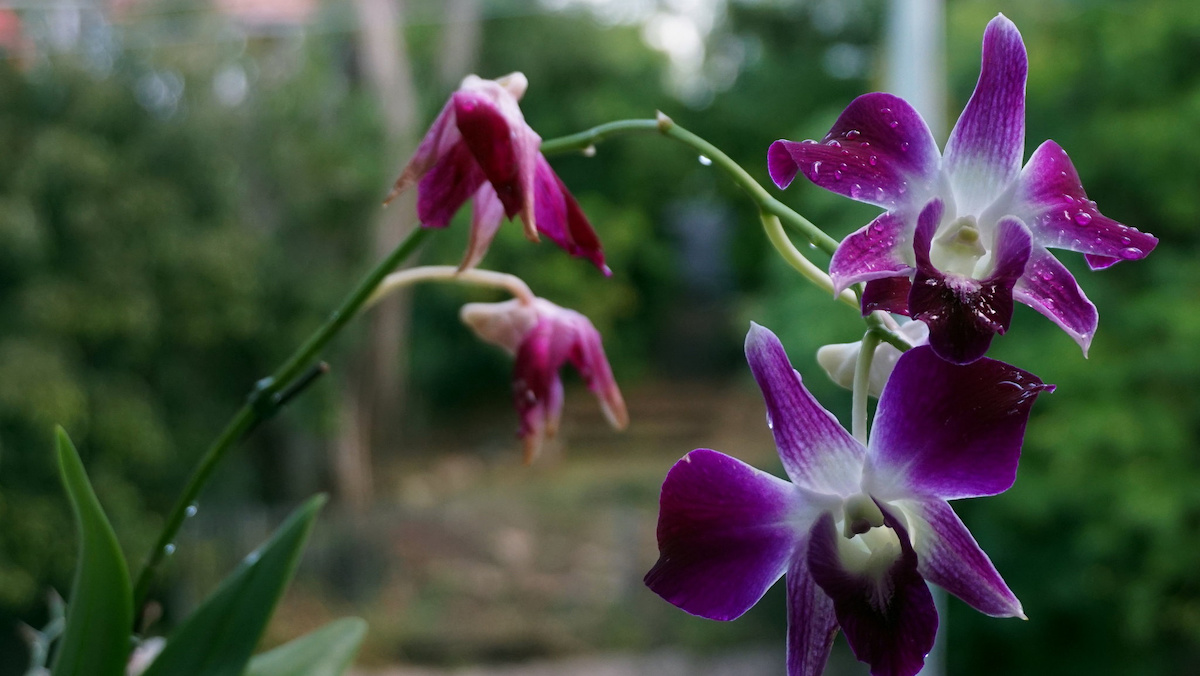
Delicate Flowers Have Remarkable Ability to Recover From Injury, Scientists Find

Several flower species, including the orchid, can recover quickly from severe injury, scientists have found. interestedbystandr / CC BY 2.0
Calling someone a delicate flower may not sting like it used to, according to new research. Scientists have found that many delicate flowers are actually remarkably hearty and able to bounce back from severe injury.
Some flowers that had been trampled on or knocked down by fallen branches are able to bend and twist themselves back into position, not only to survive but to thrive in the best possible position for successful reproduction. The recovery period was quick too, only taking 10- 48 hours, as the BBC reported.
The researchers found that several species, including the orchid and the sweet pea, were capable of recovering from injury to ensure reproduction. However, other species like the buttercup did not have the same resilience, according to the BBC.
Successful reproduction for a flower often depends on the perfect alignment of its sexual organs with its nectar tube, so realigning itself is necessary to welcome pollinators.
“Mechanical accidents happen to plants fairly often and can, in some cases, stop the plant from being able to attract pollinating insects and so, make seeds,” said Scott Armbruster, professor of ecology and evolution at the University of Portsmouth in the UK and the study’s coauthor, in a university statement. “Making seeds and propagating is a flower’s main purpose, so injuries which threaten that pose a huge problem.”
The findings were published in New Phytologist.
To perform the study, the ecologists looked at a random sample of 23 native and cultivated flowers species in Australia, South America, North America and the UK, according to The Daily Mail. They then injured the flowers in the wild in various ways, meaning they bent the stem out of shape but didn’t kill the flower. Some of the injuries set the stem off by 45 degrees while others were as severe as making them perpendicular. The scientists then returned at various times to see how the flowers were recovering.
Sure enough, plants after injury were observed bending and twisting to ensure their leaves were again facing the sun for photosynthesis, which means they were not only straightening up for reproduction, but also to produce food. The authors of the work say this phenomenon has been overlooked by scientists, according to the BBC.
“The common spotted orchid does it largely by just bending the main stem,” said Armbruster to the BBC. “It’s pretty quick, within a day or two, it’s reoriented its main stem so that now all the flowers are in the right position. The slightly more interesting ones were where each individual flower re-orients on its own, by the sub stem, that’s what’s called the pedicel connecting the flower to the main stem, and that is bending or twisting. And that’s what you see with aconitum.”
Aconitum is a genus of nearly 250 flower species.
The researchers noted that the shape of the flower was a determinant in its recovery. Symmetrical flowers like the orchid were better at recovering than star-shaped flowers like the buttercup, as The Daily Mail reported.
In fact, according to a University of Portsmouth statement, 95 percent of injured symmetrical flowers moved to recover while only four percent of radially symmetrical plants moved after injury.
“This little-known aspect of plant evolution is fascinating and tells us much more than we previously knew about how plants behaviorally adapt to changes in their environment,” said Armbruster in a statement. “This ability is, I’d argue, an under-appreciated behavior worthy of closer scrutiny.”
- 7 Science-Backed Health Benefits of Having Plants at Home ...
- To Help Save Bumble Bees, Plant These Flowers in Your Spring ...

 233k
233k  41k
41k  Subscribe
Subscribe 